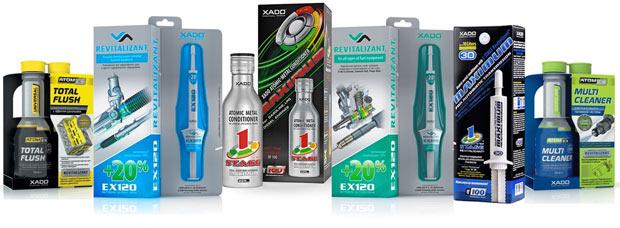
Revitalizants "Hado". Range overview
Content
What are revitalizants and how do they work?
The very concept of "revitalizant" was introduced by the company "Hado". Today, many auto chemical manufacturers use this term to clarify the purpose of their additives. However, the right of primacy belongs to the Kharkov laboratory, within the walls of which Xado formulations were developed.
Revitalizant is a complex of chemical components aimed at the formation of special compounds on the surface of ferrous metals, which partially restore contact spots, reduce the coefficient of friction and protect the treated part from chemical and mechanical destruction.


The following chemical compounds act as active components of Xado revitalizints:
- Al2O3;
- SiO2;
- MgO;
- High;
- Fe2O3;
- other compounds (in additives "Hado" are used less often).
The size of individual fractions of active chemical compounds in the composition of the additive ranges from 100 nm to 10 microns. The exact composition and proportions of the components are selected based on the purpose of a particular additive. Even Xado revitalizants are often called ceramic additives, because, due to the predominance of silicon compounds in their composition, they form a metal-ceramic layer.
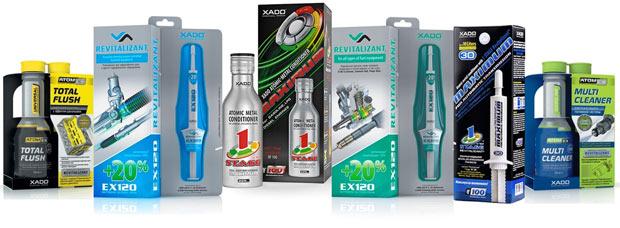

Revitalizants "Hado" AMC
AMC additives from Xado are atomic metal conditioners with additives of revitalizants. Metal conditioners differ somewhat from revitalizants in terms of the principle of operation. The main task of metal conditioners is the restoration of friction surfaces due to special active compounds of metals (usually non-ferrous). A bright representative of metal conditioners is the ER additive.
The metals used in air conditioners after activation often have a porous structure, can hold engine oil in their volume and are relatively easily deformed under the influence of external loads, for example, during thermal expansion of metals (which prevents the movable joints from jamming during overheating).
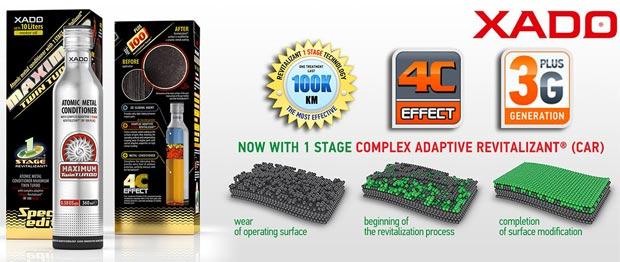

Xado AMC products are divided into two product lines:
- AMC;
- AMC Max.
AMC's product line includes three lineups: New Car 1 Stage, HighWay and Tuning. The compositions of the AMC Maximum line have a wider range: 9 additives for various purposes (for internal combustion engines, automatic and manual transmissions, power steering and other auto hydraulic equipment).


Revitalizants "Hado" 1 Stage
Revitalizants of the 1 Stage series are an updated product in which it has been revised and reworked to include not only the composition, but also the fractions of active components. This allowed, with a relatively small increase in production costs, to obtain much higher characteristics of the final product. Revitalizants "Hado" 1 Stage include three additives for various purposes.
- For petrol and diesel engines. Universal composition designed to treat engines with any type of power supply.
- Magnum for diesels. The additive was created specifically taking into account the operating conditions of diesel engines. Not suitable for gas and petrol engines.
- Transmission for gearboxes and gearboxes. Additive for increasing the service life and reducing friction of simple transmission units without hydraulic control and hydrodynamic gears.
The compositions of this series are produced mainly in tubes. They have the consistency of a liquid gel. It is recommended to add them to fresh oil before filling or to a unit in which the lubricant will not be changed for at least 1 thousand km.
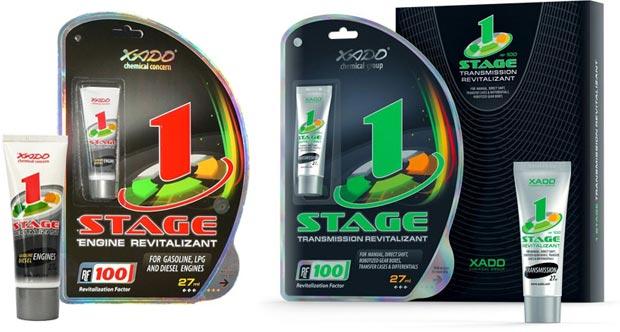

Revitalizers "Hado" EX120
The revitalizants of the EX120 series are by far the most popular in terms of assortment. Additives Xado EX120 are enhanced, that is, with more pronounced effects. This is achieved not only by increasing the concentration of active components. Before being put into mass production, the company's laboratories worked for several years to select the optimal fractions and proportions of active ingredients for various needs.
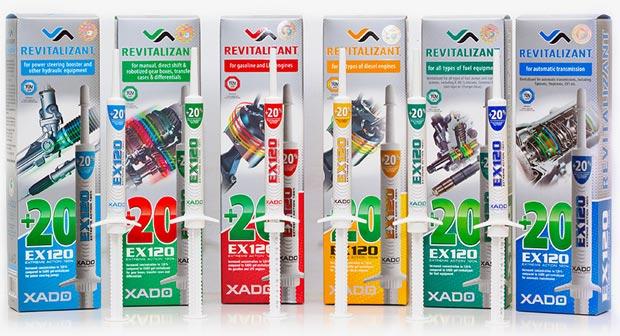

The EX120 series includes additives for the following purposes:
- for gasoline and diesel internal combustion engines with different power systems and boost levels;
- for hydraulic power steering;
- for hydrostatic transmissions;
- for mechanical transmissions, reducers and transfer cases;
- for automatic transmissions (classic automatic machines and CVTs);
- for fuel equipment;
- for two-stroke motorcycle engines.
The proportions, method of application and the effect produced for each individual supplement can vary quite a lot.


Watch this video on YouTube
Revitalizants "Hado" classic series
The classic series of revitalizants "Khado" includes additives for narrow or special purposes, as well as modified formulations produced by the company at the beginning of its activity. Let's look at them briefly.
- snipex. Grease with revitalizant, intended for the treatment of small arms barrels in order to restore worn surfaces and increase the service life. Available in tubes and used as a gun lubricant.
- Revitalizant for injection pump. added to fuel. Restores plunger pairs, working surfaces of nozzles. Available in small plastic tubes.
- Revitalizant "Hado" for cylinders. Added directly to cylinders. Used to restore micro wear on liners, rings and pistons. Reduces the coefficient of friction. Used for any piston engines.
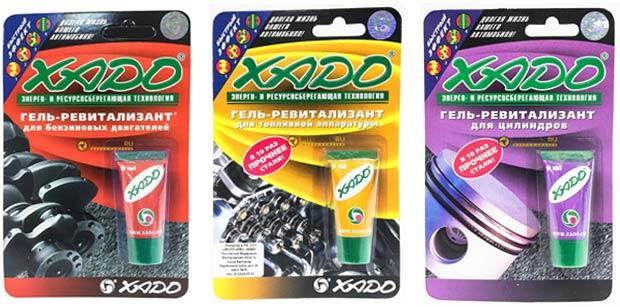

- Revitalizant for 2-stroke internal combustion engines. Designed specifically for two-stroke engines of motorcycle and boat equipment, as well as for processing the internal combustion engine of hand gasoline tools (including those with a separate type of lubrication).
- Gel revitalizant. It is mainly used in friction bearing units and compressors. The gel is poured into the oil or squeezed out directly into the friction unit.
All Xado revitalizants have proven themselves well and have mostly positive feedback from motorists. At a minimum, the effect of reducing friction and partially restoring the operability of mechanisms is observed in almost all cases of use. However, in the case of critical wear, no, even the best automotive chemicals will help.


Watch this video on YouTube
